The Garden Tower 2 is a one-of-a-kind vertical growing system designed to accommodate up to 50 plants. The Gt2 features an integrated vermicomposting tube, eliminating the need for additional soil nutrients.
Additionally, it naturally produces compost and compost tea, enhancing plant growth and sustainability, enabling you to garden in a 4 by 4 space without the need for weeding, and with minimal watering.
You can grow heaps of vegetables on a balcony, in a small yard, or even indoors. If you're considering growing more of your own at home, read on and let me break down exactly what the Garden Tower 2 is and the pros and cons of getting one.
Be sure to check out the videos below, too.
About the Garden Tower 2
The Garden Tower concept was Colin Cudmore's response to a growing number of areas in America that have limited access to fresh produce at reasonable prices.
Together with business partner Joel Grant, they designed the Garden Tower: a vertical, rotating six-cubic-feet vessel capable of growing vegetables, herbs, and flowers.
It has built-in natural composting and watering systems that allow produce to be grown organically.
In traditional raised beds or containers, over 90% of available nutrients are lost below the root zone. The Garden Tower addresses this issue by recapturing these nutrients and delivering them directly to the plant roots, achieving hydroponic-like growth rates without the high cost and complexity.
Aside from making food production more sustainable, the Garden Tower 2 is designed to take up less floor space, allowing for the planting of at least 50 plants in a small urban setting.
With food prices on the increase, and concerns over pesticide use, the Garden Tower is ideal for those who want more control over their own food supply but have little land to cultivate.
Who can benefit from a Garden Tower?
Everyone can benefit from having more control over their own food supply. It saves money and increases nutrient intake.
Moreover, many of us have become increasingly concerned about self-sufficiency and ensuring that we have access to food in difficult times.
And then there's the growing body of science showing the health benefits of eating more vegetables, reducing the risk of lifestyle diseases such as heart disease, diabetes and some cancers.
For growing enthusiasts in general, the GT2 is a dream because of its low maintenance, making it more accessible to those with disabilities and illness than traditional gardening beds.
What is the Garden Tower 2 made of?
To ensure its recyclability and durability, the Garden Tower Project designed the Garden Tower 2 using food grade USA-made HDPE (non-toxic, BPA & PVC free plastic) components.
It is both durable and recyclable.
It comes in two colors: terracotta (pictured above) and warm sandstone.
The unit has an expected life span of approximately 12 years, and a guarantee of 5 years.
How big is the Garden Tower 2?
The Garden Tower 2 is 6 cubic feet. It is 43 inches tall and 24.5 inches wide.
It weighs 36 lbs., but can weigh in at 200 to 220 lbs. when filled with moist soil.
What can you grow in the Garden Tower?
While some use the tower for flowers, like me, most are interested in its ability to grow leafy greens and vegetables in general.
Fruiting vegetables like tomatoes, eggplants, bell peppers, chili peppers, squashes, and cucumbers grow very well in the tower. You can even grow melon!
Then you have your greens like spinach, kale, pak choy, and lettuce.
You can grow onions, rocket, and even strawberries.
There's so much you can grow.
+ Visit the Garden Tower website
What vegetables should be planted in each of the rings?
The rings refer to the levels of the tower, and the Garden Project has a salad tower growing plan that classifies vegetables into three categories:
- Those recommended to be planted in the upper planting rings
- Those in the lower rings
- And those that are suited to all rings.
Examples of vegetables that you can grow in the upper rings include tomato, eggplant, carrot, leeks, onion, turnip, beet, and Brussels sprouts.
Meanwhile, those best grown in the lower rings are melon, cucumber, cauliflower, broccoli, cabbage, jalapeño, and summer squash.
The vegetables that can be grown in any of the plant pockets include bell and cayenne peppers, radish, lettuce, snap pea, green bean, spinach, celery, dwarf kale, and Swiss chard.
Can I use the Garden Tower indoors?
Yes. You can grow indoors with the Garden Tower 2, though you need to have a light source coming in, as plants require the light for synthesis.
You will be somewhat limited on the types of vegetable you can grow.
However, you can certainly grow cut and come again greens like spinach and lettuce and kale, and tomatoes, and herbs like mint and coriander.
Do I have to grow from seed?
You don't need to grow from seed. You can always pick up young plants from your local garden center.
Growing from seed is cheaper, and for most vegetables you can plant seeds straight into the Tower.
But best practice is to sprout and grow plants until they are strong enough to plant in the Tower.
How does the Garden Tower 2 work?
1. Oxygenation
The Garden Tower 2 is hollow inside, with only the compost tube protruding from the centre.
The tube contains hundreds of holes, which allows for compost oxygenation and easier access for plant roots.
The empty space surrounding the tube is where you pour in the soil. The tower can hold up to 5.5 cubic feet of soil.
2. Plant Distribution
The Tower is comprised of 6 layers of planting rings.
The standard layer has five rings with 10 planting pockets per layer, adding up to 50 curved pockets for 50 plants.
If you want to extend the tower to plant more, you can buy additional rings.
The topmost layer is left open and can be used for growing plants.
The bottom planting layer mounted on the circular platform allows the Garden Tower 2 to rotate 360 degrees, so sun exposure can be directed to different sides of the Tower when needed.
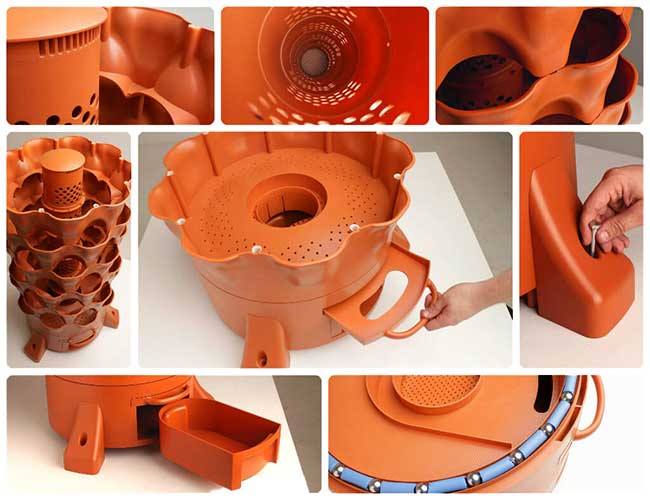
The Tower is easy to assemble.
3. Composting
Anything planted in the Garden Tower 2 grows organically through the vermicomposting system. This system produces organic fertilizer.
Vermicomposting refers to the process of converting organic waste into natural compost by using worms.
The common type of worm used for vermicomposting is the African nightcrawler.
At the start of the growing season, one-half cup of worms is placed inside the compost tube, with vegetable scraps from the kitchen added regularly to ensure that the compost tube is full.
Aside from vegetable peels, the compost pile can also be made up of coffee grounds, crumbs, and grass trimmings.
You must not add animal products, oily foods or citrus fruits to the Garden Tower.
4. Worms
African nightcrawlers aid the composting process by turning the kitchen waste scraps into manure called worm castings.
Rich in nitrogen, phosphorus, and other trace minerals, castings make an effective natural fertilizer.
The worms travel from the top to the bottom of the compost tube to leave castings.
The matter at the bottom part of the compost tube becomes fine black compost, created by the advancement of aerobic microbial digestion.
Nine months of using the Garden Tower 2 can transform more than 50 gallons of kitchen wastes into organic fertilizer.
For vegans concerned about the use of worms in this way, one should note that the worms are performing their natural job, and in fact are thriving because of the perfect environment created for them by the system.
Some would argue it is exploiting the worm for a benefit, though I would argue this is symbiotic rather than exploitative.
As a vegan “grow your own” enthusiast who always tries to relocate pests like slugs and snails rather than kill them, I know the important job worms play in helping to increase the amount of air and water that gets into the soil and in breaking down organic matter.
5. Watering
The parallel structure of the Garden Tower 2 allows the water poured from the top to flow downwards to the bottom of the container.
Watering is minimal and only needs to be done every week or two, as the tower can retain about 14 gallons of water.
Unlike hydroponic tower systems, no electricity or pumps are required.
The Garden Tower 2’s base has a detachable compost tray that collects two gallons of nutrient-enriched tea called leachate.
This compost tea is actually the excess water drained through the compost. Simply remove the compost drawer and pour the contents in through the top of the tower.
+ Visit the Garden Tower website
Benefits of a Garden Tower 2
1. Perfect for urban spaces and small abodes
This is a space-saving device. The traditional horizontal garden requires a fair-sized bed to create a decent vegetable patch.
The Garden Tower is vertical and can be erected in an urban setting – even where there is no soil.
2. Low-maintenance and affordable
Maintaining a vegetable patch takes a lot of work. In the summer I often have to water twice a day, and then there's weeding and moving pots around.
A Garden Tower doesn’t require weeding, digging, or frequent watering.
No expensive soil is needed either, as the worm castings contribute to the fertilization and maintenance of the soil.
3. Environmentally-friendly
Since a Garden Tower uses an efficient watering and composting system, no harmful substances or chemicals are released as by-products, nor used as fertilizer.
Water consumption is also significantly reduced, and this leads to the conservation of this important resource.
4. Grow and eat organic food
Many industrial farming practices use pesticides and treatments to increase yield and the size of produce.
Such practices reduce nutrient density. Growing your own means eating organic, safe, nutrient-dense food.
5. Cut down on food expenses
Once you start preparing meals using the greens from your Garden Tower, you’ll start saving money on groceries.
Depending on how much you grow, and the types of vegetables you grow, you may find you buy significantly less than before.
6. Easy for newbie gardeners
Vertical gardening is perfect for those without prior experience of growing.
Sure, you get better at growing as you go, but the Tower ensures you will succeed with a good harvest – regardless of your experience.
How much does the Garden Tower 2 cost?
Standard:
The standard GT2 costs $379.
If you look look at the initial cost outlay and map that over the 12 years estimated lifespan of the Garden Tower 2, it's under $31 a year.
I spent that in soil for the garden last month!
Starter:
You can upgrade to the Garden Tower 2 Starter Bundle for $407, and with that you'll get the following”
- The Garden Tower® 2 50 plant composting container garden
- Dr. Earth Plant Food
- Plant Labels (50)
- Soil Moisture Indicator (x2)
- $20 Baker Creek Seed Gift Certificate
Is this worth it? I think so. Organic soil is $10+, and a soil moisture indicator is around $15, plus you have the $20 gift certificate.
Premium:
The third option is a Garden Tower with wheels. The premium kit includes a heavyweight steel support structure, and three heavy-duty double locking (rotational axis locking) triple ball bearing black wheels.
Shipping:
Shipping is added in the cart depending on location.
Refunds are available within 30 days, if the product is unopened. Defective products will be replaced.
Pros & Cons
Pros:
- Produce your own organic produce at home
- Great for those with limited space to grow
- No gardening experience required
- Rotates 360 degrees
- Minimal maintenance required
- Save money on soil compared with normal gardening
- Use up your kitchen scraps for compost (environmentally friendly)
- Built from non-toxic materials
- Lasts up to 12 years
Cons:
- No planting vine-type plants
- Requires worms (not good for the squeamish or vegans who disagree)
- The Tower is heavy when full of moist soil, so may require a couple of people to move it to a new spot. You can purchase a premium kit to attach wheels to the base, but I think this should be a standard feature, given that when growing in limited space we often need to move things around.
+ Visit the Garden Tower website
In Summary
With increasing populations living in smaller spaces, vertical gardening is likely to be a big part of the future.
Concerns over food prices and supply also require us to take back control of growing our own food, as much as is possible.
And then there's the need for us all to eat better quality produce that hasn't been exposed to harmful pesticides and other chemicals used by big agriculture.
The Garden Tower 2 is low maintenance. It's also something the whole family can enjoy cultivating, from kids through to parents and grandparents who may not be able to bend down to traditional gardening beds anymore.
For me personally, one of the most attractive aspects is the dual composting effect.
I compost separately and it takes quite a bit of work through the year to maintain the balance for the right compost.
With the GT2, you just feed scraps in as you go. Though the amount we produce as a family may mean we have excess.
I also appreciate the water efficiency. Having a system that locks in the moisture is far more sustainable than having to water a garden once or twice a day in the hot months.
I see vertical gardening as win-win. It's time and money saving, and a healthy hobby.
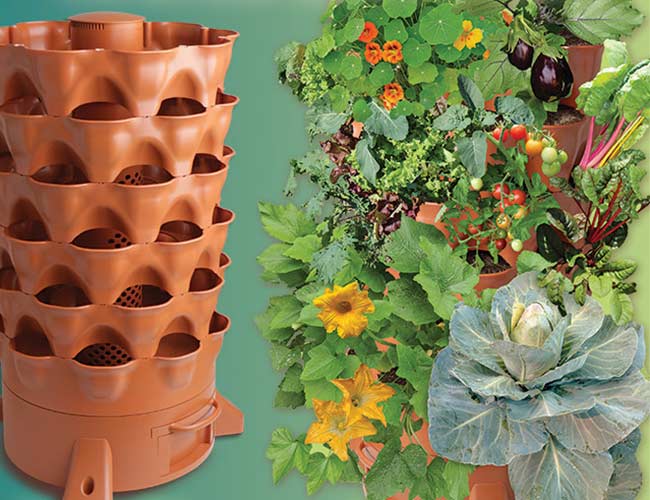
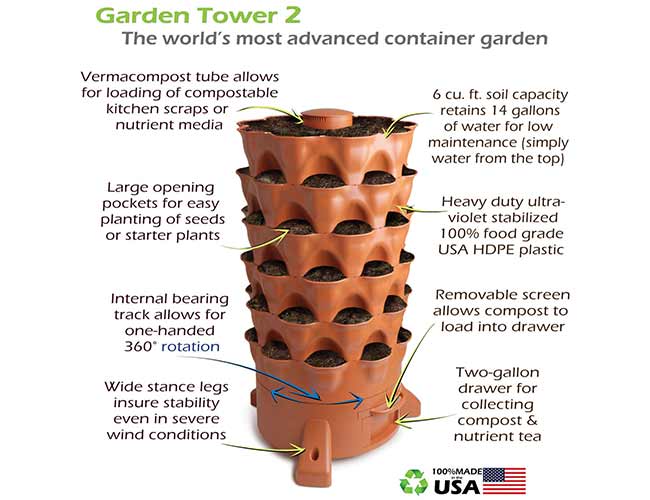
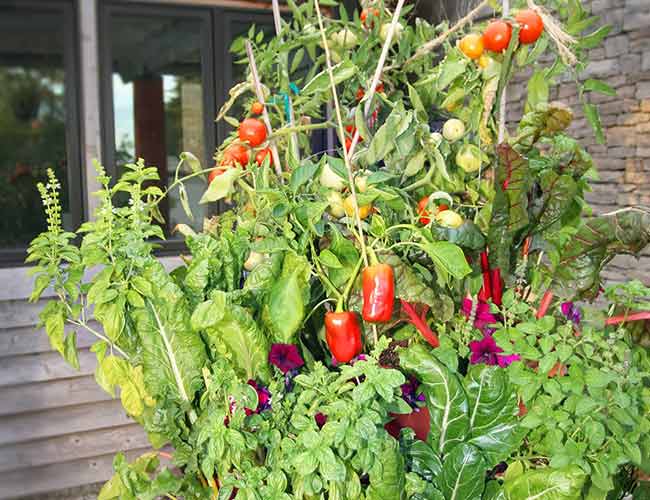
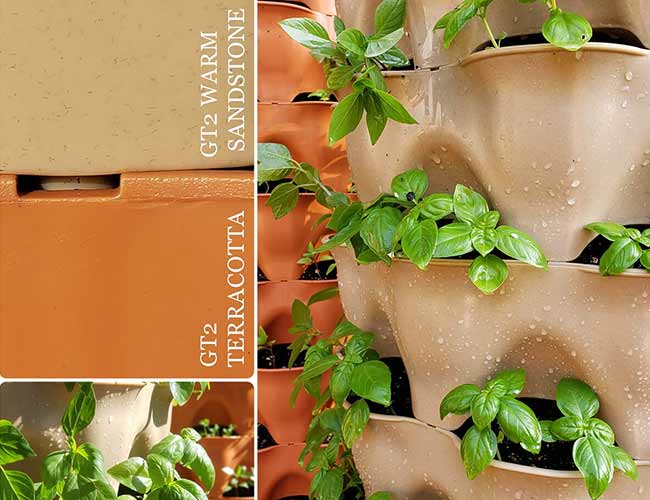

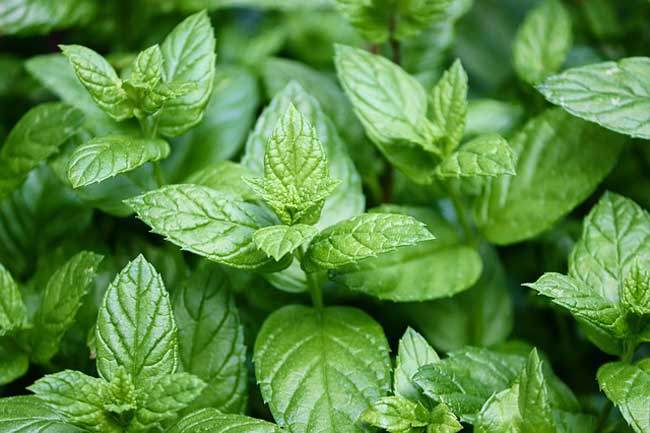
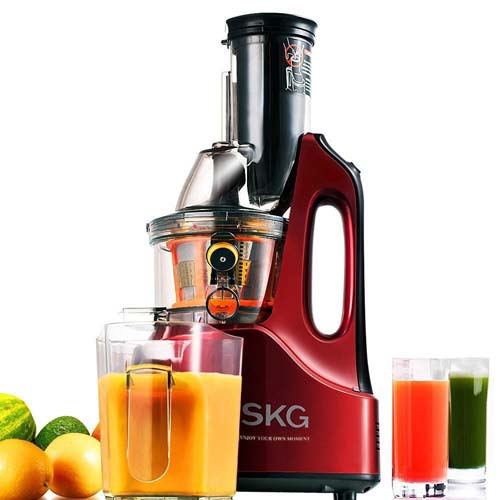
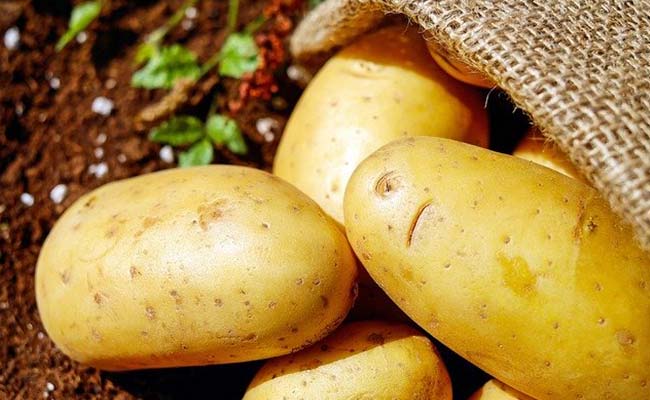
What if I used organic compost top soil? My garden center recommended that I use this type of soil for garden tower gardening. I purchased and planned vegetable plants and flowers vs seeds.
Jun 03, 2024 at 3:01 am
That’s fine. Adding some compost as a soil amendment to the pockets and top of the Garden Tower system is recommended.
Jun 03, 2024 at 7:06 am